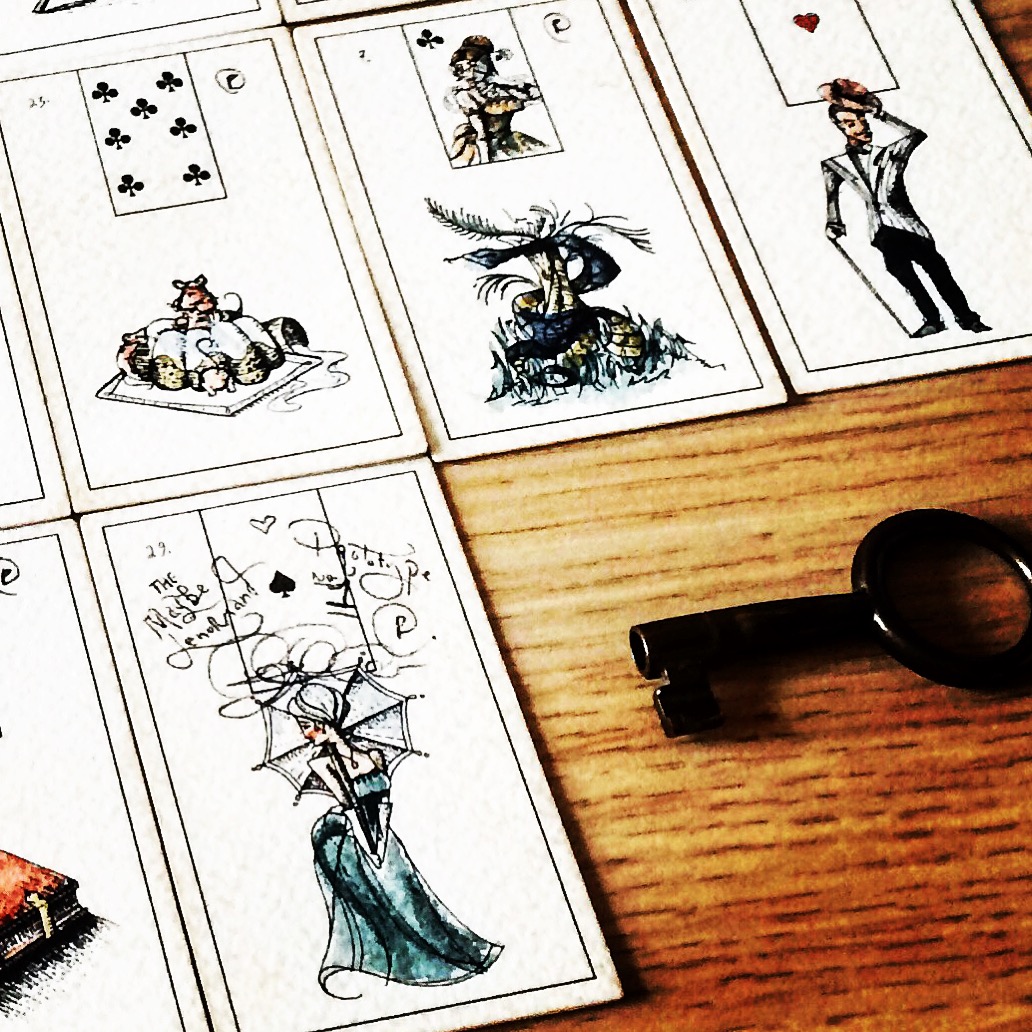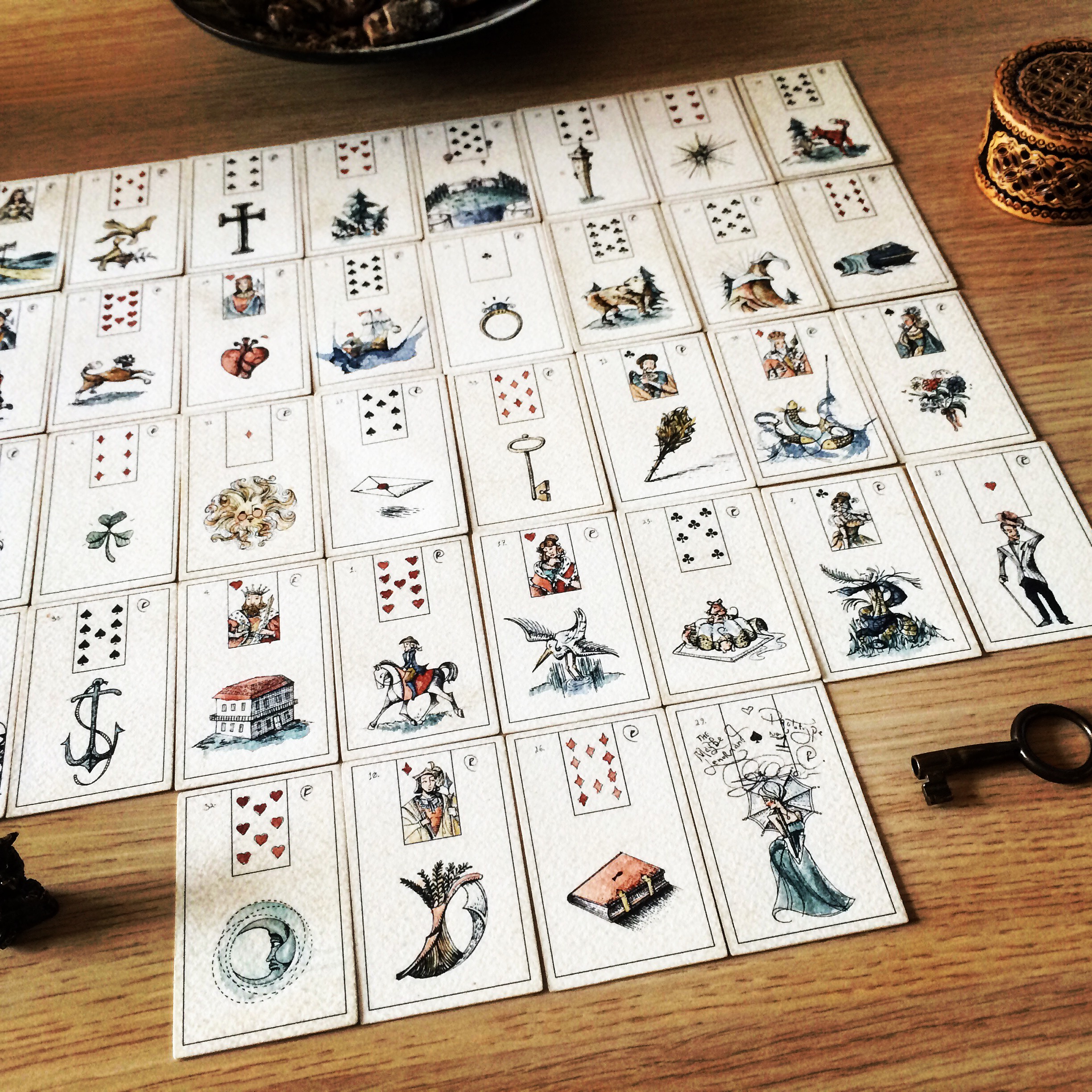When Keith Floyd, the famed British chef died in 2009, I cried.
I can cry very passionately, but while thinking about it, the passionate crying, that is, I rationalize my perplexing emotions along these lines (as a Zen inclined person, I can’t help it): I loved Keith Floyd because Keith Floyd knew symmetry.
In his travelogue BBC series, Floyd on Africa, he practically articulated what I always thought I was doing when reading cards, namely put into it neither too much, nor too little, but exactly as much as it’s necessary.
While throwing an endless amount of ginger and curry into his cauldron in the middle of nowhere, Floyd expressed his exasperation with people wanting precise measurement: ‘But how much exactly, how much curry, how much ginger?’ He made a dismissive gesture, while throwing an endless amount of ginger and curry into his cauldron. Then he said:
‘You have to put into your cauldron neither too much, nor too little, but exactly as much as it’s necessary.’

Now, this line hit me like a grand revelation, an unparalleled epiphany.
An entire philosophy of living was captured in this, and I could sense the appeal to true faith that only small children are still capable of, the faith in hitting it just right without thinking about it, and without prejudice. It’s a great thing when you can experience your intuition as more than this manifestation: ‘I’m getting this impression, it’s vague but maybe it’s good’.
We can do better than that.
Neither too much, nor too little, but exactly as much as it’s necessary.
Let this be the mantra.
If I did more Zen teaching and less fortunetelling teaching, I’d say that I could start my own lineage from this wisdom. Maybe I already have…
The point that I’m trying to make is that in fortunetelling, especially in fortunetelling with a lot of cards in play on the table, what we must get a sense of is precisely this: symmetrical relations. How much is too much? How little is too little, or too much? Is there balance? If something is too much, whose perspective do we go with here, that of the reader or that of the sitter?
If something is too much for the sitter, by the law of symmetry this means that something in the sitter’s attitude is too little for you. Think about how many times your truth staring in your sitter’s face was often too much and too painful. But not for you.
This symmetrical relation, ‘if my truth is too much for you, then your delusion is too little for me’, is in fact exactly what makes people fear fortunetellers. No one wants to be caught deluding themselves.
Fortunetellers of caliber don’t have the habit of letting themselves be intimidated by belittling acts: ‘You’re too much for me’. They keep it in mind that such attitudes of exasperation and suspicion may well come from the part of the other that’s very small and limited, filled with anxiety and fear, attachment and denial.
Now, wwhy do we want to remember this, and indeed go with the kind of delivery that follows Keith Floyd’s principle of putting into your cooking ‘neither too much, nor too little, but exactly as much as it’s necessary?’ Simply because there are concrete situations when we need to boil down the essence of, say, 36 cards on the table, and turn it into a minute and a half truth.
Let’s have a very quick look at a grand tableau concerning a love triangle situation, especially since third party readings are particularly sensitive to the law of symmetry. Here’s a classic:
‘Does he love me more than he loves his wife?’
This question expresses anxiety related to not being good enough. Shame may also be involved.
‘How much does the wife know?’
This question discloses the desire to spy and assess impact. On a deeper level there’s the desire to have more agency than merely acting from the wings can afford you, especially if you happen to be ‘the other woman’.
As men also wish to spy on their wives’ perceived flirtation with others, they also want to know:
‘Is this just a fling or love’?
Whichever way you go, when you read for a love triangle and have all your cards on the table, you will most definitely want to establish symmetrical relations on all the levels, between you and the sitter, between the sitter and the others she’s asking about, and between you, the cards, and the context of the question.
Generally speaking, love triangles are a complete waste of time, but they are the best at disclosing something significant about the human nature: We all want to be touched. We all want to touch others in a deep and profound way. So I like love triangles for this reason alone.
Let’s see now, the one-minute and a half line relating to this classical question of ‘much-ness’, very much an intangible à la Keith Floyd:
‘How much do I mean to my married lover?

The answer to this shot like a rocket, being blunt, precise, and irrevocable at the same time.
‘You mean a lot to this man, but you’re lost to him. The ‘meaning’ of you is both everything and nothing at the same time.’
Now, if you think this line was too much for the sitter, consider the following, an insight I arrived at by applying the principle of ‘neither too much, nor too little but exactly as much as it’s necessary.’
Let’s unpack briefly what was surmised in less than a minute:
Looking at the tableau, we see immediately that the reason why the other woman signified by the classical Snake is lost to the Man is because she comes to him from the place of loss, suggested by the Mice flanking her to the left. We say this because mice have a habit of making things disappear, devouring everything in no time.
Interestingly, all the main significators occupy the lower right hand corner of the tableau. The Man has no future lines. The Woman, his wife, has the Snake in her future and nothing else. The Snake, who is ‘the other woman,’ has the Man in her future. Some entanglement.

Meanwhile there’s the Mice depriving everyone of whatever they consider is their right, and the Heart is in the ditch.
In other words, this loss is given by the position of the Coffin in the Man’s column, finishing the line where we find Heart. When the heart is dead, meaning is dead.

The Snake also ‘knights’ to the Coffin – the chess move – so there’s an indirect trajectory here that leads the Snake to her own demise in relation to the Man’s standing.
He mirrors the Fox, a card of deceit, going to the Clouds, the third corner card.
The Man’s deceit is strategically placed in a cloud, something that’s understandable given the nature of the relationship: Married, but closest to ‘the other woman.’
The wife is in the picture to stay, so to speak, as we find her in the position of the ‘destiny’ cards, yet occupying the house of Cross, a house of illness and chagrin.
This is not surprising. If the wife can only get to the man though his loss of the other woman, then no wonder she is unhappy. Who wants to be second choice? An institution? In comparison, the other woman is an inspiration (Woman mirrors the Tower, the Snake mirrors the Star).
We find the Woman below the Mice. The Snake touches her corner, ‘poisoning’ her crossing to her husband at all times.
The Woman representing the wife may be part of the destiny line, but this destiny is not a fulfilling one: as the Woman looks back at the Book, the object of secrets that the Snake knights to, and the Scythe is beyond the Book threatening to reveal everything, we get a clear sense of the tension in the middle of the destiny cards.
While the Woman mirrors the Moon, a card of reflection, suggesting good standing where image is concerned, we don’t get a clear picture of her actual impact on how the meaning of the other woman subjects her to conditions that are not of the heart.
From her own perspective, however, the Heart is strong (the Woman intersects with the Heart in the Bear, but from the Man’s perspective the Heart is dead. If we throw in the Snake’s perspective of her heart, we meet here the archenemy in the form of the Mountain, an obstacle.
More could be said, but this is the gist of what anyone can say in a minute and a half.
Whether it’s useful to the sitter to know that she’s a paradox, that she means a lot by meaning nothing, or that she participates in causing grief to another through her nothingness, is another matter.
The point is that when we cook with the cards we experiment with measures of the precise intangible. We investigate into ‘much-ness’ and ‘enough-ness’.
This is the magic. When we divine, the aim is to put into it neither too much, nor too little, but exactly as much as it’s necessary. The art is to see how this is achieved through measuring perspective against perception. ‘Who is doing what to whom’ is still the main question in all divination practices. It can get very tight and elegant when you follow a few simple rules.
I’m always up to cooking some magical broth with the Lenormand cards. In a grand tableau, I always have some good fun with the agents of action.
For an intro and advanced methods of reading with these cards, see Volume 3 in the Read Like the Devil trilogy, dedicated to the Lenormand cards.
♠
For more such practice with the cards:
- Join the Read like the Devil Club.
- Visit also Aradia Academy and sign up for the newsletter that will keep you informed on upcoming courses and cartomantic activities. Note the Off the Shelf offering that also includes free resources.
- Check out my books on the philosophy and practice of divination at EyeCorner Press.
- Get a reading. When I perform a reading, I also teach, simply because I can’t help myself, so you will be twice served.


